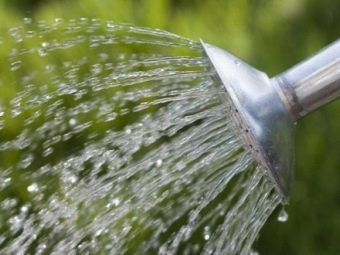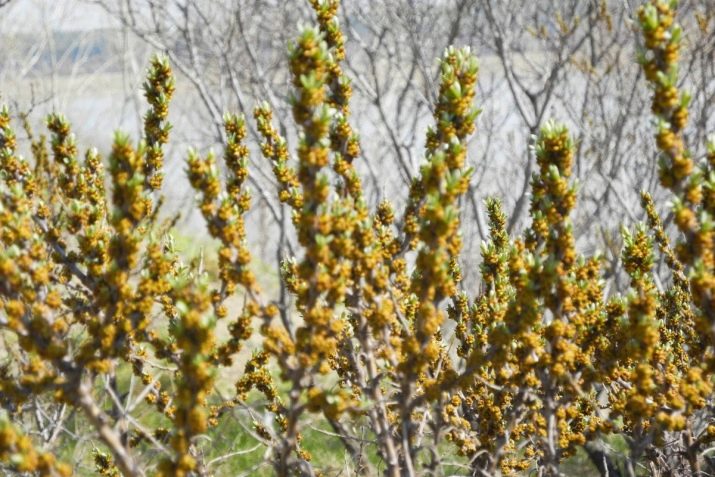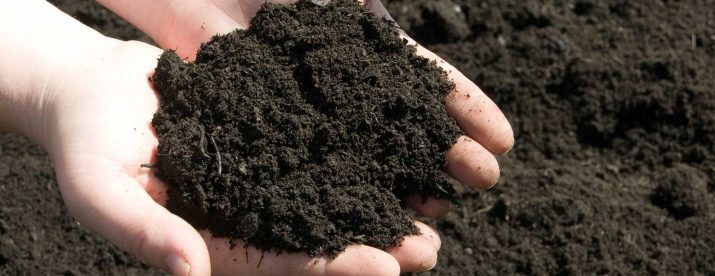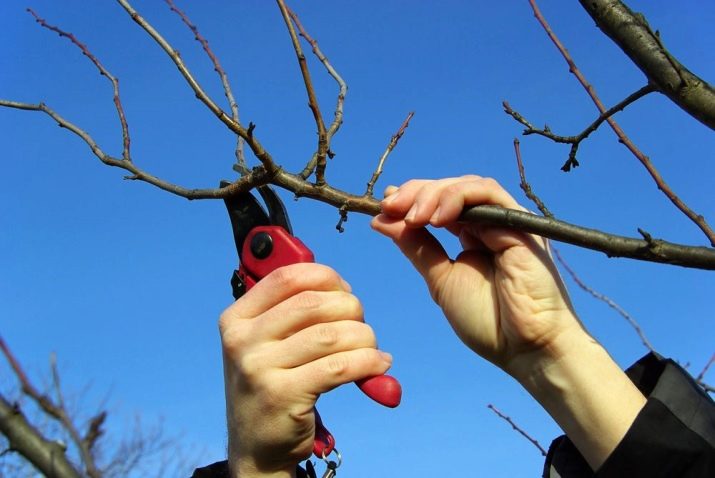Sea buckthorn: planting and care
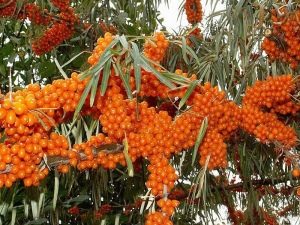
Sea buckthorn is a multivitamin and medicinal berry crop. Sea buckthorn fruits contain organic acids (1.04-2.97%), easily digestible sugars (1.9-9.3%), vitamins C, P, B1, B2, B9, provitamin A, mineral salts, dyeing and tanning substances. The more ripe the berry, the more sugar content in it, the less acidity and vitamin C. Sea buckthorn is a culture that can accumulate: vitamin E (tocopherol), serotonin (it has an antitumor effect, it regulates blood pressure).
Features of culture
Sea buckthorn - shrub or tree. The ground part is a few stems, forming a small crown, which consists of the main and overgrown branches, the buds are vegetative or vegetative-generative. Vegetative buds are formed on the upper shoots before fruiting. A year later, 5-7 branches with spines appear on one part, which grow into the main branching. Another part of the shoots dries after fruiting. In the middle and lower zones of the shrub, vegetative-generative buds are formed. The following year, fruitful shoots grow from them, and then fruits.
In the middle of summer or during the ripening of berries, the vegetative-generative shoots die off. At the base of the shrub, small vegetative buds are formed, they are in a sleeping state, the awakening of their growth occurs when the branches are damaged. The fruitful branches gradually dry out and expose the lower tiers of the crown.
Fruiting plants have a clear division into zones: leafy, peripheral - it is responsible for the harvest and the central - the zone of exposure. If the exposed area prevails over deciduous, then the plant requires a rejuvenating pruning.
The growth of stems and leaves
The growth of shoots of shrubs is directly dependent on soil moisture. Shoots grow intensively in the second half of May and June; this requires maximum water demand. With insufficient watering, their growth decreases or stops completely. This is due to the fact that the main root mass lies in the horizontal surfaces of the soil.
Flowering and fruiting
Sea buckthorn buds bloom end of April - early May. Flowering occurs in the first half of May with a duration of 5-7 days. In favorable conditions, fruit ovaries make up 35-40%, partially they fall off, and 20-35% form a crop.
Sea buckthorn is a dioecious plant pollinated by the wind, has female and male flowers. For successful pollination and fruiting requires male replanting to female bushes. Another option is to vaccinate males in females. The flowers of sea buckthorn are small, they are located at the base of the renal scales. Female flowers are monopedic, solitary, greenish-yellow. Male - yellowish-brown, have short inflorescences of four stamens. Female flower buds smaller than male. Sea buckthorn is able to bear fruit annually. Fruiting depends on the quality of planting material. Vegetative saplings please with fruits for the second or third year after disembarkation in the soil. Seedlings - after 4-6 years.
The fruits of sea buckthorn are yellow or orange, small in size, changeable in color and shape. One hundred grams of wild fruits weigh 17-50 grams, the same weight of selection fruits 78-80 grams. Full ripening of berries comes in August.
With inadequate soil moistening, the berries become shallow and mature prematurely.
Root system
The plant has vertical and horizontal roots, at the ends of which there are thin roots. The color of the roots is light, the structure is loose. They are able to recover. If you cut the tip of the root, then shoots appear on it. They are used for plant reproduction. But also on the roots of sea buckthorn there are nodule nitrogen fixers. For sea buckthorn, this makes it possible to germinate well on nitrogen-poor soils.
Rest period and winter hardiness
Sea buckthorn plant with a short rest period.The harvest of sea buckthorn affects the temperature of April and May. By the end of April, the formation of the flower ends, and in May the sea buckthorn blooms and disperses the pollen, this is facilitated by dry warm weather.
Moisture requirement
Due to the close location of the root system in the soil, the requirements for irrigation are particularly high. In the "wild" nature, sea buckthorn usually grows on the banks near rivers. It calmly transfers flooding by flowing waters. When bogging and stagnant water dies. A short drought does not prevent the plant from growing normally, since the size of the sea-buckthorn leaves is small and the root system is loose. With a prolonged absence of moisture, the shoots stop growing, the leaves curl, the fruits become shallow. When the soil moisture is not lower than 65-70%, the sea buckthorn feels comfortable.
The yield of the plant depends on the abundance of precipitation in September, May, August. The disadvantage can be eliminated with additional watering.
Relation to light
Sea buckthorn is photophilous. Poor influence on root offsprings and young seedlings of thick grass. Older plants with a lack of light are quickly drawn out and degenerate. Place for planting sea buckthorn in the garden should be well lit.
Soil requirement
Sea buckthorn naturally grows in the floodplains of rivers on light sandy soils, while there must be good air permeability and water permeability. Sea buckthorn grows well on chernozem soils. On dense and wetlands, roots are damaged.
Sea buckthorn - a plant demanding to the light, water, mechanical composition of the soil.
To plant the plant in the open field at the cottage will help step by step instructions. Consider how to grow sea buckthorn, what are the diseases, for example, sea buckthorn fly, how feeding, pest control, and how the plant reproduces.
Agrotechnology
Using knowledge about the patterns of growth of leaves and stems, as well as carrying out agricultural work: loosening, fertilization, irrigation, you can achieve high yields of sea buckthorn.
Landing time
Sea-buckthorn gets better when planted in spring. Saplings are planted in late April - early May in pits with a diameter of 60 centimeters and a depth of 40 centimeters. Pits are prepared in advance, the bottom is loosened.
Add:
- on loamy soils - mineral and organic fertilizers, sand;
- on sod-podzolic, medium loamy - one pit is eighteen, twenty kilograms of peat (compost, humus), thirty kilograms of sand and two hundred grams of fertilizer.
After planting a seedling, the soil is compacted, the plant is tied up with a cola and watered. Watering continues before the shoots begin to grow.
How to plant?
When choosing seedlings for planting, it is necessary to consider that the sea buckthorn has female and male bushes. Planting occurs in the ratio: one male tree on three female trees.
On the plot for planting sea buckthorn in the fall choose a good, bright area. Prepare the soil by digging: the lower layer of soil is raised, and the upper, dark layer is laid down. At the same time for one square meter of land make: 10 kg of humus + 50 g of granulated superphosphate + 500 g of lime. For planting seedlings prepare pits with a depth of 40 and a diameter of 60 centimeters, fertilizers are poured and mixed.
At the onset of spring (the last days of April - the beginning of May) a drainage composition of sand, rubble, broken brick, a layer of ten centimeters is introduced into each pit. A stake is inserted into the pit, the earth is poured over the drainage by a mound two thirds of the volume of the entire pit. Seedlings are planted on the north side of the stake, sprinkled the roots of the plant with soil, then compacted. Seedlings are fixed to the cola, make a deepening around and water. From above watering mulch humus. Watering continues until the growth of shoots.
How to care?
The soil under the bushes sea buckthorn kept all summer in a loose state, constantly weed out. Around the bushes after the first spring loosening, the soil is mulched with rotted manure about five to seven centimeters.From weeds and for a better thermal regime cover the roots of the shrub with a dark plastic film. The edges of the film sprinkled with earth. The soil under the film remains wet, it warms up quickly. Warm land attracts earthworms, which loosen the top layer. Remove the film before the harvest: in late August - early September. Sea buckthorn responds well to the content of phosphorus and organic matter, so fertilizers are applied annually:
- in the spring under each bush - humus 20-30 kilograms;
- in August, one square meter of planting is 40-50 kg of granulated superphosphate.
Watering
If precipitation is absent for more than seven or ten days, then the sea buckthorn should be watered. Especially after flowering, during the growth of leaves and shoots, fruit loading - 30-40 liters per square meter of planting. In the fall, in dry weather, it is watered during the period of leaf fall.
Crown care
The crown of the bush is formed with a height of 20-30 centimeters. Remove inconveniently located and shading branches, shorten long and thin twigs. Thick branches are not removed, so as not to weaken the plant. During the fruiting period, dry branches are cut from the crown. Age trees for rejuvenation pruned. The effect is achieved when pruning seven- and ten-year-old plants for three-year-old wood, leaving one side branch in a whorl.
How to multiply?
Sea buckthorn can breed as cuttings and seeds.
Reproduction green cuttings
Growing green cuttings of seedlings takes place in two stages:
- in film greenhouses rooted cuttings with foliage;
- grow in nurseries in the fields.
The job is as follows:
- Greenhouse preparation. The ground area of greenhouses is divided into several ridges, each one meter wide, with a passage between them of 70 centimeters. On top of each ridge poured a layer of drainage of fine gravel and gravel with a height of 15-20 centimeters. Then they supplement the top with a five-meter layer of substrate from peat and river sand in a ratio of 1: 3. All this is compacted and watered. Finished ridges are marked with wooden planks at a distance of 5-7 centimeters between them, leaving furrows up to one centimeter deep.
- Preparation of green cuttings. For grafting using vegetative shoots with foliage. With one uterine bush turns up to fifty shoots. The best cuttings are selected in the phase of suspending the growth of shoots, from the twentieth of June to the twentieth of July. The shoots are divided into cuttings, each 7-10 centimeters long. The best for rooting cuttings are considered to be 15-18 centimeters, but their consumption increases. Chopped with a sharp knife, knitting the cuttings. The lower ends of the bundles are treated with a plant growth-stimulating solution (concentration of 150-200 mg per liter of water) for 14-16 hours at a solution temperature of up to 350 ° C, then washed with water.
- Planting and care of cuttings. Prepared cuttings are planted on ridges in the previously marked grooves, then plentifully watered. Rooting takes place in a greenhouse at an air temperature of 23-30 ° C with a humidity of 90-100%. Rooting cuttings for five weeks and until spring next year they are not dug. Spring dig, sorted by grade and planted in the ground, watered. In a year, in a maximum of two, standard saplings are obtained.
Cuttings harvested in the spring and stored in a pile with snow. On a sheltered, well-lit area, cuttings are planted. The plot from autumn is fertilized with humus or compost. Spring soil loosened. In late April - early May, cuttings previously kept in warm water are planted on the beds, watered, covered with humus on top and covered with plastic wrap. With the formation of 4, 5 leaflets, the film is removed. With this method, sea buckthorn is well accustomed.
Seed propagation
Simple and affordable way. Disadvantage: 50% of seed offspring are male. The method is not suitable for cultivation of sea buckthorn gardens, used for breeding purposes.
- Seed preparation for sowing. Sea buckthorn seeds do not ripen after harvesting.Without prior preparation, they can sprout when sown in the fall and spring. Spring shoots have low germination energy, therefore stratification is possible. Seeds for two, three weeks stored in a humid state in the cold.
- Soil preparation. The soil of light texture, well lit and protected from drafts, is dug up and fertilized before seeding (65 kg of humus + 60 g of superphosphate per square meter). The landing site is covered with a layer of peat / sand mixture (1: 1 ratio, 3 cm thick).
- Sowing. Seeds can be sown in autumn and spring. In autumn, in October, they sow dry seeds so that they do not germinate before the onset of cold weather. Otherwise, with earlier sowing, seedlings will die from frost. In spring, seeds are sown in late April, early May. In the grooves at a distance of one to two centimeters from each other, to a depth of one or two centimeters spread the seeds, covered with fine humus. After eleven - twelve days, shoots appear. With a lack of moisture, seedlings can linger in the ground for ten or more days.
- Care. It is necessary thinning two to three centimeters from each other when the first leaves appear. With the fourth, fifth leaflet, re-thin through the distance between shoots to five centimeters. Seedlings water, loosen the aisles, weed systematically weeds, mulching with humus between the rows. Until mid-July nodules appear on the roots, on the stems - side branches. Seedlings intensively grow in height in July, August. By the end of the growing season, their length reaches 18-40 centimeters, the number of leaves is from 14 to 68.
Reproduction by vaccination
The method of breeding sea buckthorn with the help of vaccination is very time consuming and inefficient. The cuttings have a low survival rate, so it is rarely used.
How to transplant to a new place?
Transplantation of sea buckthorn tree is advisable to carry out in the spring. It is better to replant a two or three-year-old plant than an adult - it will not take root. We select the shrub we have chosen for transplanting carefully, without damaging the maternal root. We cut the main root thirty centimeters from the sapling and perform all the operations for planting sea buckthorn, given above.
The survival rate of sea buckthorn during transplantation will be easier with the least damage to the roots.
Harvesting
Upon reaching normal size and color, fruits are harvested by hand. Harvesting is made difficult by the large number of leaves and the tight bonding of the fruit with the stalks.
There are several ways to harvest sea buckthorn.
- Simple but unproductive - one by one. With the separation of the berries from the stem, the juice flows out, eats away the hands, while the berries get wet.
- Harvesting at the beginning of the ripening of the berries with wire spring scrapers. Part of the leaves and stalks are torn off along with the berries. Labor productivity increases, but it takes time to further clean the leaves and other debris.
- Harvesting in a frozen state. Berries freeze at minus fifteen degrees. Frozen berries shake off the film under the bushes. This is the most productive method, it allows you to collect up to 30-40 kilograms in eight hours of work.
What to do if the bush does not bear fruit?
In order for the buckthorn bush to bear fruit, it is necessary:
- the presence of male and female bushes;
- coincidence of flowering periods;
- windy weather.
The productivity of sea buckthorn directly depends on rainfall in September, May, August.
The lack of moisture must be compensated by additional irrigation of the soil. It is possible to increase the amount of the harvest of sea buckthorn due to agrotechnical measures: loosening the soil, timely application of fertilizers in sufficient quantity. This will affect the formation of longer annual growths and will provide an increased yield of berries in the next year.
Tips and tricks
Experienced gardeners give helpful recommendations.
- Sea buckthorn should be planted in early spring. Planted plant will get stronger before the arrival of cold.
- For landing determine the location, well lit and blown by the wind.
- To grow on the site and male and female trees. The result will be a good harvest.
- During the flowering of sea buckthorn in windless weather, for better pollination, it is enough to wave the male flowering twig above the female trees.
- Choose only healthy plants for planting. The two-year-old sapling has a height of 50 centimeters, a trunk about 7 mm in diameter. The length of the roots to 25 centimeters.
- When pests appear, the plants are seasonally treated with a solution of ash at intervals of 5-7 days.
- Pruning shoots do only if necessary before the onset of sap flow. In winter, cut off the damaged and dried branches.
About planting and caring for sea buckthorn, see the following video.




